[wpfepp_submission_form form="2"]
[wpfepp_post_table form="2" show_all=0]
[wpfepp_submission_form form="2" paid="1"]
Go to Blogger edit html and find these sentences.Now replace these sentences with your own descriptions.This theme is Bloggerized by Lasantha Bandara - Premiumbloggertemplates.com.
Go to Blogger edit html and find these sentences.Now replace these sentences with your own descriptions.This theme is Bloggerized by Lasantha Bandara - Premiumbloggertemplates.com.
Go to Blogger edit html and find these sentences.Now replace these sentences with your own descriptions.This theme is Bloggerized by Lasantha Bandara - Premiumbloggertemplates.com.
Go to Blogger edit html and find these sentences.Now replace these sentences with your own descriptions.This theme is Bloggerized by Lasantha Bandara - Premiumbloggertemplates.com.
Go to Blogger edit html and find these sentences.Now replace these sentences with your own descriptions.This theme is Bloggerized by Lasantha Bandara - Premiumbloggertemplates.com.

 This 19-year-old earns $54,000 a year mining bitcoin as a full-time job — here’s what it’s like[/caption]
This 19-year-old earns $54,000 a year mining bitcoin as a full-time job — here’s what it’s like[/caption]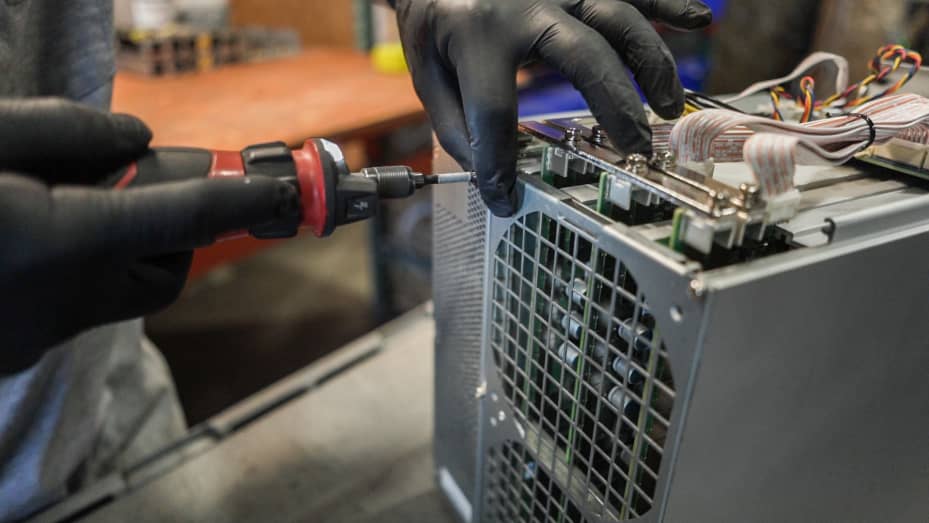
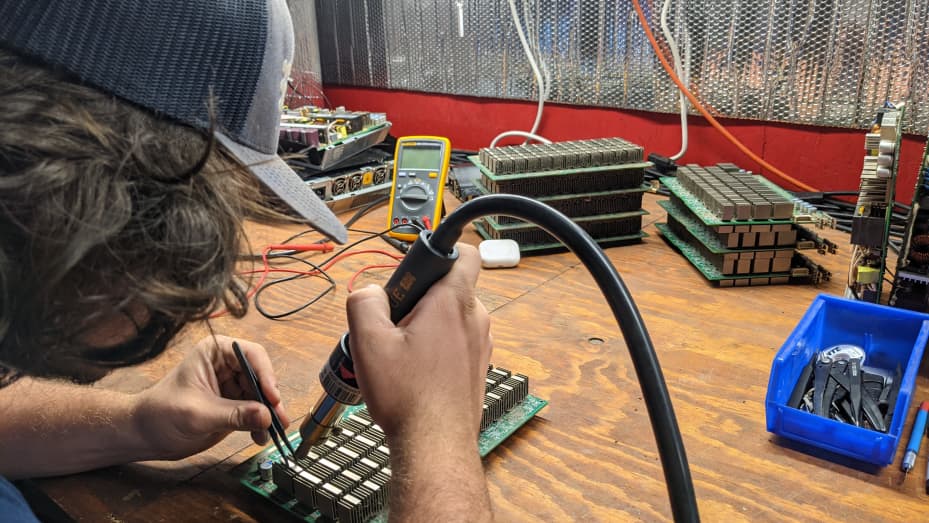
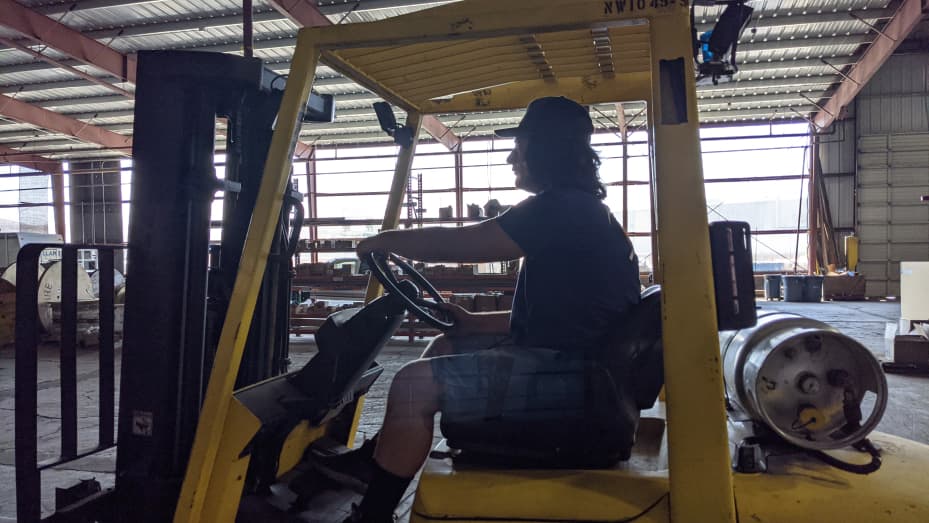
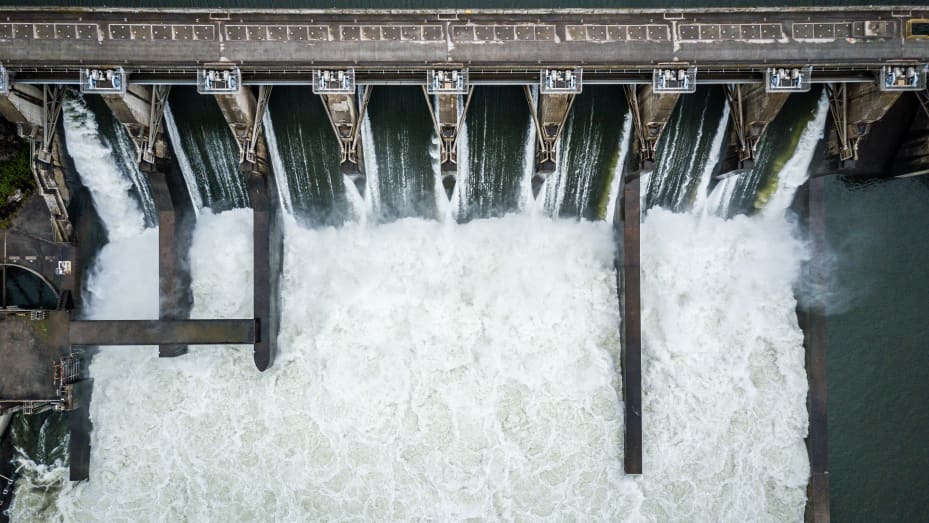
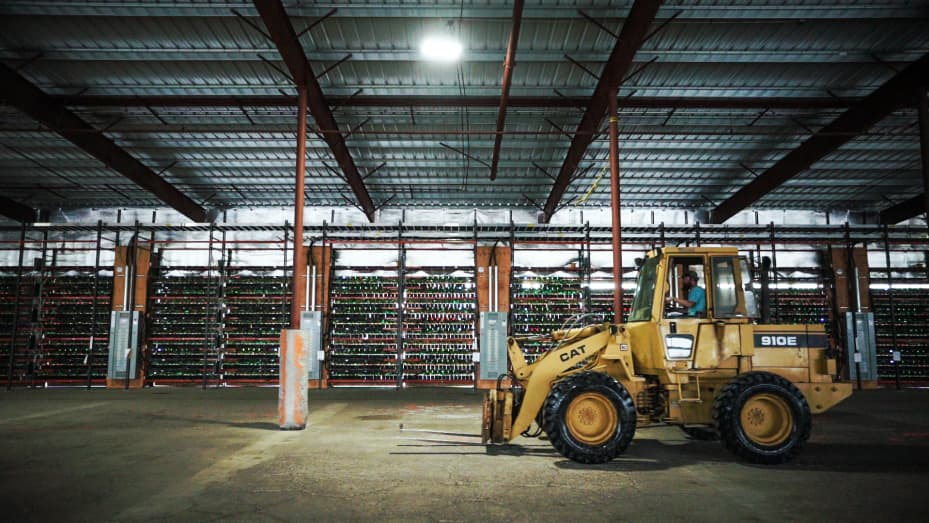
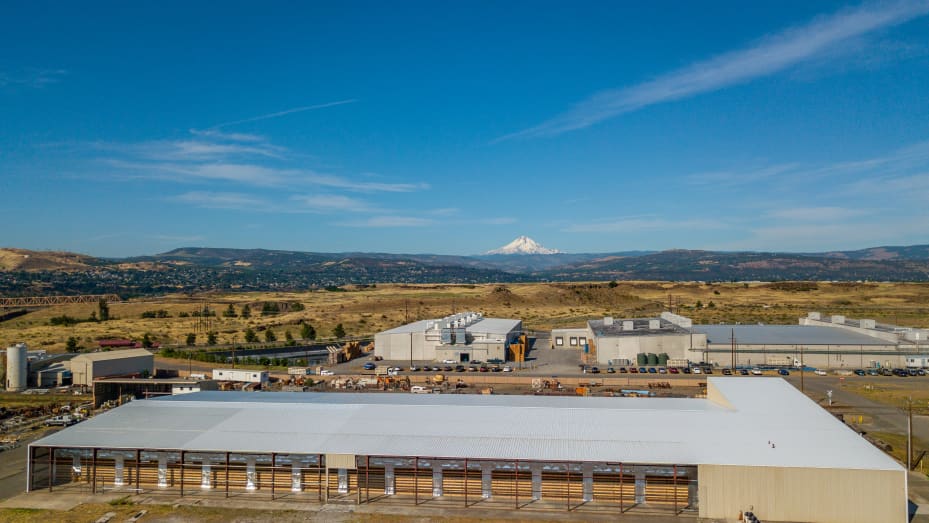
Nick Sears was 17 years old when he helped build a bitcoin mining farm in Dallesport, Washington. He was 18 when he was legally allowed to buy bitcoin for the first time. And now, at 19, Sears has doubled down on his life as a bitcoin miner, saying “no” to college and “yes” to living in a room inside a data center that houses 4,500 whirling ASICs.
“My room is sound-locked,” said Sears of the acoustic retrofitting of his living quarters. “So I can’t hear the machines when I close my door, but they are definitely noisy if I have my door open.”

This 19-year-old earns $54,000 a year mining bitcoin as a full-time job — here’s what it’s like
The machines generate about 80 decibels of noise apiece — but Sears says he likes being as close to the action as possible. It also beats making the half hour commute each way from his parents’ house in White Salmon.
The 19 year-old has spent pretty much every single day for the last two years teaching himself the nuances of how mining machines work – and crucially, how to fix them. He believes his education in soldering and electronics is worth a whole lot more to him than a university degree.
“I don’t think about going to college at all, just pursuing further knowledge in the repairs of the miners,” continued Sears.
CNBC spoke with multiple miners for this story. Many explained that the allure of mining comes from being able to tangibly grasp the power of bitcoin.
“If you’ve been to any of these data centers, the first thing you’ll notice is just how vast and how impressive they are. They’re huge,” said explained Thomas Heller, chief business officer for Compass Mining, which works with Sears’ employer, SCATE Ventures.
“There’s so much noise, and there’s so much heat. There’s just so much action going on. It is quite cool to walk into a data center for the first time that’s mining bitcoin, because you can really connect the intangible aspects of bitcoin as a currency, with the physical nature of these machines consuming power and doing these calculations.”
Mining for bitcoin isn’t a glamorous job.
“When we first got here, we were setting up racks, creating the network infrastructure for the internet, and we essentially had to wire everything,” he said.
Once the physical infrastructure was up and running, Sears got into more of a rhythm. He’s now up at 7 A.M. everyday and works from eight to four. He remains on site afterwards, just in case of an emergency, and there is a technician who works night shifts so that Sears can get some sleep.
But beyond the hours, there is no typical work day for Sears.
“That’s the cool thing about this job – I don’t have a set routine that I do everyday,” he said. “Every morning, I find what needs to be fixed.”
Some days, that means Sears repairs walls and other physical infrastructure. “If we have to repair a camera, maybe I’m fixing a cable.”
But the biggest part of the job is monitoring and managing every one of those 4,500 Bitmain and Whatsminer ASICs to ensure they are running 24 hours a day, seven days a week. If even one of those machines goes offline, or is only running at partial capacity, the SCATE Ventures mine loses money.
That’s because when someone is mining for bitcoin, what they are actually doing is lending their computing power to the bitcoin network. The more machines you have online, the better your chances at winning bitcoin.

Roughly every ten minutes, 6.25 bitcoins are created. In order to mint these new tokens, a global pool of miners are all contributing their computing power to running a hashing algorithm. But these miners aren’t working in a vacuum. They’re competing against each other to see who can unlock each batch of new bitcoin first.
So the stakes are high for Sears. Being diligent and knowing how to triage issues across the entire facility is critical to success.
Some mining sites use more sophisticated software to monitor the machines, which includes checking the temperature of each hashboard within the individual miners.
But most important for Sears is just figuring out which of his machines aren’t functioning at full capacity.
“Every day, you find the machines that have stopped hashing, then you remove them from the rack, and you troubleshoot,” he explained. “You’ve got to find the problem with the machines. You’ve got to find out why it went offline.”
It could be a power outage, which would affect all the machines, or it could be a network outage which could impact all of the machines or just some.
“Sometimes they just need a power cycle or a reboot,” he said.
But the hardware fix isn’t always as simple as that.
“It could be that the fan on the individual machine that is used for cooling is broken, or maybe it’s the power supply that needs to be repaired or replaced,” explained Heller.
“It could be the hashboards themselves,” continued Heller. “Each hashboard has lots of individual chips, and those are the chips doing the calculations. I think with a Bitmain machine, if more than four chips on a single hashboard are broken, the whole hashboard will switch off. So instead of hashing at about 100%, you’re only hashing at two-thirds or one-third.”
Seasonal changes in the weather add a whole other layer of complexity.

Storms can lead to power outages or other disruptions. Heller says that in the summer, the machines can also overheat, especially at the farms which have upgraded to using more powerful units over the course of the last two years.
SCATE’s mine in Washington seems to have found a way around this problem by using its own immersion cooling technology, which involves submerging bitcoin miners in a non-conductive fluid to dissipate heat, rather than relying on fans.
Sears may not need a diploma to mine, but taking online training courses run by Chinese engineers who work for Bitmain has gone a long way toward helping him repair specialized mining equipment.
Last month, Sears and another employee completed a virtual class through Bitmain to learn how to work on the ASIC chips on hashboards, as well as the power supplies of the S17s, one of the most popular machines now used to mint bitcoin.
“I have a certification of maintenance repair, so lately, I’ve just been perfecting my skills in that category,” explained Sears. “It certifies my knowledge and gives me access to buy supplies and material directly through Bitmain.”

Next, he hopes to attend an in-person class in Atlanta, Georgia, to learn more about soldering. “The hard part is learning how to solder and disassemble a circuit board,” said Sears.
Sears’ boss, Scott Bennett, is big on giving his team access to the resources they need to get better at their jobs.
Bennett, CEO of SCATE Ventures, is a self-taught miner who started his business in his parents’ garage back in 2017, just before the last crypto “winter,” when prices of bitcoin and other cryptocurrencies plunged. Similar to Sears, Bennett once lived at one of his data centers – only he opted for an on-site camper, rather than a room inside the facility itself.
It helped that he lives within minutes of some of the cheapest power in the world.
“All of our facilities are 100% hydro powered,” said Bennett.
The mining facility where Sears works is next to the Columbia River and directly adjacent the Dalles Dam. “We love that source of power. It’s cheap, renewable, and very abundant,” he said.
As for employee pay, Sears says that he makes $54,000 a year, plus full health insurance, which is paid for by the company.
Bennett also runs some mining machines exclusively for his employees. That amounts to about .02 BTC quarterly, which by today’s price equates to a $788 bonus every three months to Sears.
“With all the miners in China going offline, the difficulty rate has been changing, so the rewards are higher,” said Sears. “The last time we got a little bit more than we did the previous time, which is cool by me.”

It is also possible to become a crypto miner without physically handling any mining equipment at all.
Adam Gitzes decided in early 2021 that he really wanted to mine for bitcoin. After his wife vetoed the idea of installing equipment in their home, he began to look for alternatives.
Gitzes discovered Compass Mining, which allows customers to buy mining machines for between $5,800 and $11,700, then locates them in partner data centers and takes care of the physical logistics.
“I bought the machines on the website, Compass managed the logistics, delivering the machines to three different data centers in North America,” said Gitzes, who explained he spent 1.1 bitcoin — about $60,000 at the time of purchase — on them.
“Compass also configured them the way that I asked.”
So a typical day in the life of a miner like Gitzes consists of waking up and checking online to see how much bitcoin his machines mined overnight and to ensure that none of his units are down.

Gitzes owns six machines that he says are on the “higher end.” When China expelled all its miners, Gitzes says it doubled the amount of money that his machines generate daily.
After paying the mining pool fee of 1.25%, Gitzes’ miners generate about .0055 bitcoin a day, or $216 at today’s prices. Daily electricity costs are about $30, so he’s pulling in roughly $186 a day, or just shy of $5,700 every month. At that rate, he’ll recoup his investment in about 11 months, assuming no major fluctuations in energy or bitcoin prices.
Gitzes was so impressed by the Compass business model that he quit his job at Amazon to join the team in March. “The mission to decentralize mining and make it so that everyone can participate is something that I find really important,” said Gitzes.

A year after introducing its first camera for vloggers (the fixed-lens ZV-1), Sony is bringing the concept to an interchangeable lens platform. The ZV-E10 ($699.99, body only) is built around the same sensor as the stills-focused a6100, but is made just for video. It has a quality in-camera microphone, a front-facing display, and some focus and metering modes tuned for vlog video. The 4K video it captures is crisp, but digital stabilization tightens the angle of view when working handheld, and a weak battery means you'll want to carry some spares for all-day work.
 Sony ZV-E10[/caption]
Sony ZV-E10[/caption] Sony ZV-E10[/caption]
Sony ZV-E10[/caption] E 10-18mm F4 OSS, 10mm, f/7.1, 1/100-second, ISO 100 (Photo: Jim Fisher)
E 10-18mm F4 OSS, 10mm, f/7.1, 1/100-second, ISO 100 (Photo: Jim Fisher) E 10-18mm F4 OSS, 12mm, f/22, 1/3-second, ISO 100 (Photo: Jim Fisher)
E 10-18mm F4 OSS, 12mm, f/22, 1/3-second, ISO 100 (Photo: Jim Fisher) (Photo: Jim Fisher)
(Photo: Jim Fisher) (Photo: Jim Fisher)
(Photo: Jim Fisher)
A year after introducing its first camera for vloggers (the fixed-lens ZV-1), Sony is bringing the concept to an interchangeable lens platform. The ZV-E10 ($699.99, body only) is built around the same sensor as the stills-focused a6100, but is made just for video. It has a quality in-camera microphone, a front-facing display, and some focus and metering modes tuned for vlog video. The 4K video it captures is crisp, but digital stabilization tightens the angle of view when working handheld, and a weak battery means you’ll want to carry some spares for all-day work.
The ZV-E10 is built with the needs of video-first creators, particularly vloggers, in mind. As such, it drops the EVF, built-in flash, and Mode dial from the stills-first a6100. Instead, it uses a quality three-capsule microphone (a windscreen is included) and adds a swing-out, front-facing LCD. It’s a slim, light camera—2.5 by 4.5 by 1.8 inches (HWD) and 12 ounces.
Sony is offering the camera in a black (which we received for review) or white finish. If you’re already in the E-mount mirrorless system, you can buy it as a body only. There’s a kit option with the E PZ 16-50mm for $799.99, but if selfie vlogs are your thing, you may prefer a wider zoom. The camera relies on digital stabilization to supplement lens-based IS; it’s quite effective, but it does crop the view of your lens.
It’s built around an APS-C sensor, smaller than the full-frame chips Sony puts in its a7 series. You can use both full-frame (FE) and made-for-APS (E) lenses. There’s typically some penalty of cost and weight by opting for full-frame glass, but it’s a plus if you’re already in the Sony system. To get a wider view, I used the Sony E 10-18mm F4 and Tamron 11-20mm F2.8, and tried it with the Tamron 150-500mm for telephoto shots.
The grip is way too small to use handheld with a big lens, as it’s too unwieldy to hold the lens while using the rear display to frame shots. A tripod came in handy there, as well as for some long-exposure images. For the most part, I used the camera handheld along with the GP-VPT2BT Wireless Shooting Grip, available separately for $150.
The grip connects to the ZV-E10 via Bluetooth and includes controls to record clips, adjust zoom, and toggle Background Defocus (more on that later). It’s an almost required accessory for handheld use—you’ll naturally hold the camera steadier with a pistol-style grip—and it folds out into a convenient tabletop tripod. Tilt and rotation are supported, too. If you’re buying the camera, you should try and make room in your budget for the grip.
The ZV-E10’s controls are a departure from a stills-first camera. There’s no mode dial on the top; instead you’ll set the capture mode via the menu. You do get a shutter release at the top of the handgrip. It has a rocker to drive zoom on power zoom lenses, like the E 16-50mm kit option.
An On/Off switch, Record and Background Defocus buttons, and a control wheel are located on the top. There’s also a mode button to swap between still, video, and slow-motion (S&Q) capture. As mentioned, there’s no traditional mode dial, so you’ll need to go into the menu to change between auto, manual, shutter, aperture, and other exposure modes.
Background Defocus is a feature introduced on the ZV-1. It’s made its way here and works the same way. Pressing the button opens the f-stop on the attached lens as wide as it will go. With the right glass, you’ll net a blurred-out background behind your in-focus subject. If you want everything to be in focus, tap the button again. The lens aperture closes down to get more of the shot in focus. If you know your way around a camera, you can still set the f-stop manually, but this is a quick way for anyone to get the bokeh look, regardless of level of expertise.
The center of the top plate houses the three-capsule mic. Sony bundles a windscreen with the camera, just slide it into the hot shoe to shield the built-in mic. The hot shoe also accepts Sony’s digital on-camera mics and can mount a standard analog mic; the 3.5mm input is nearby on the left side panel.
The rear is dominated by the swing-out LCD. Physical controls are on the right side. The full Menu and on-screen Fn menu buttons are at the top, while Play and Delete are at the bottom. The rear command dial sits between. It turns to adjust settings and includes four directional presses—Display, ISO, EV, and Drive.
Physical controls are supplemented via on-screen menus, but touch support is limited. You need to use buttons to navigate through the on-screen menus, which extends to the very useful Fn interface, an overlay menu with a two-strip design housing a dozen options. It’s completely configurable (via the main menu), and it’s worth taking the time to fiddle if you want quick access to a certain feature.
Sony has a better menu system with real touch controls on some of its high-end cameras, including the full-frame a7S III, but it’s not included here. The ZV-E10 is built on an older processor and sensor platform, one that doesn’t seem to support the new interface.

Sony ZV-E10
It does limit your control over the camera when you’re both cinematographer and on-screen talent. You can tap the screen to set a focus point, but that’s really it. If you’re recording a selfie vlog and want to make some settings between clips, you’ll need to get behind the camera and work with the rear buttons.
The display itself is excellent. The 3-inch 1.4-million-dot LCD is sharp enough to be your only viewfinder, and plenty bright, especially if you turn on the Sunny Weather display setting, something that came in handy when working with the camera outdoors in early summer. A red outline shows around the frame when recording. There’s also a tally light on the front panel, an additional visual confirmation that you’re rolling footage.

Sony ZV-E10
The camera includes Bluetooth and Wi-Fi to connect to a smartphone—you’ll use the Sony Imaging Edge Mobile app for Android and iOS for remote control and file transfers. It includes USB-C to connect to a computer for transfers or for use as a webcam. It complies with UVC and UAC standards, so it’ll work with Macs, PCs, and Android 11 smartphones. Streaming is at 720p and includes an audio feed.
The ZV-E10 is powered by Sony’s oft-lamented NP-FW50 battery. It’s rated for about 80 minutes of record time or 440 photos, but your mileage will vary based on how you use the camera. On-the-go charging is available, but it’s pretty slow. It took about three hours to recharge a nearly depleted battery with an 87W Apple charger.
The hot shoe supports Sony digital microphones. You can also use analog mics via a 3.5mm input, attach a set of earphones for monitoring (also 3.5mm), or send a clean 4:2:2 8-bit video signal out of the micro HDMI port to feed an Atomos Ninja V or external other recorder.
Images and video are saved on SD memory. There’s a single slot nestled into the battery compartment. The ZV-E10 supports UHS-I transfer rates, and can also use Sony Memory Stick Duo cards.
The ZV-E10 uses the same autofocus system as other recent APS-C models from Sony, including the a6100 and the step-up model in the line, the a6400. It mixes phase and contrast detection, spreading coverage across the frame. The autofocus is able to track subjects once they’ve been acquired, and it supports face and eye detection for people and pets.
There are some fine-tuned options for vloggers. One is Product Showcase, a one-touch setting for product reviewers and others who present items to camera. Sony’s face detection will typically stick with you no matter what gets in between subject and camera, but this prioritizes focus on objects close to the lens. It works quite well.
More related to metering than focus, the camera is also tuned to set exposure based on detected faces. This is especially useful when recording video with changing light—say a walk-and-talk moving from sunlight to shadow, and for scenes with a strong backlight. If you’re starring in your own vlog, you’ll want to be properly exposed.
Focus is fast, and the camera does as good a job tracking action as others in the Sony series. We consider it to be among the best you can find in an APS-C camera, and it’s backed up by a very speedy burst rate, 11fps. It manages 111 JPGs, 48 Raw, or 43 Raw+JPGs before the buffer fills, but if you do fill it all the way, you’ll need to wait for all the photos to save to memory before you can switch to a video mode. We clocked it around 25 seconds for Raw, 37 seconds for JPG, and 76 seconds for Raw+JPG pairs.
The ZV-E10 uses a 24MP CMOS sensor to snap photos. It’s the same as in the a6100 and image quality is identical. If you stick to JPG capture, you’ll enjoy photos with clear detail through the standard ISO range. If you delve into manual settings, you can move beyond ISO 6400. Photo quality suffers when you move past ISO 12800, and is blurry at the highest ISO 51200 setting.
Raw capture is available, too. You’ll need to use software to process images—we use Adobe Lightroom. I wasn’t able to look at Raw photos from the camera, as Adobe hasn’t yet added support. We know what to expect, though, which is the same level of clarity and flexibility you get from the a6100.
 E 10-18mm F4 OSS, 10mm, f/7.1, 1/100-second, ISO 100 (Photo: Jim Fisher)
E 10-18mm F4 OSS, 10mm, f/7.1, 1/100-second, ISO 100 (Photo: Jim Fisher)
Sony’s Raw files offer loads of room for creative photographers to edit exposure and color. They retain more detail at high ISOs, but show a bit of a grainy look at high settings. It’s still best to keep the camera at ISO 12800 or below when you can.
For video, the ZV-E10 is a little better than the a6100 in terms of specs. It records 4K footage at 24 or 30fps at the same 100Mbps recording rate, but has a few additional color profiles, including a flat S-Log3 for grading and HLG for HDR playback. The video is captured at 8-bit quality, though, so you won’t have as much room to adjust color as with 10-bit footage.
Off-speed recording is available, but only at 1080p. It’s available in the S&Q (Slow and Quick) shooting mode. You can record at 1, 4, 8, 15, 30, 60, or 120fps with 24, 30, or 60p playback options. It opens up some creative possibilities for cutaways and b-roll, as much as 60x speed fast motion and 5x slow motion. Pushing the camera to 120fps nets footage on the soft side, but the slow-motion effect is compelling enough to forgive. The Fujifilm X-S10 and X-T4 go further with slow-mo, as far as 240fps at 1080p, and net clearer 120fps footage.
You can hear the quality of the ZV-E10’s mic for yourself in our sample footage. The audio comes through loud and clear. You’ll hear some rattling in our test video, but that’s my fault. I attached a set of anchors for a Peak Design camera strap, which in turn knocked about the sides of the camera. If you use Peak straps, you may want to skip putting the anchor connectors on the ZV-E10, especially if you’re using the Wireless Shooting Grip.
If there’s a complaint to be made about the ZV-E10 as a handheld video camera, it’s with stabilization. In-body systems (IBIS) are more and more common, but Sony chose to rely on a mix of lens-based stabilization and digital ActiveShot to achieve handheld footage that’s free of jumps and jitters.
With the handheld grip, ActiveShot is effective, but it comes at the cost of angle of view—it crops footage to get the job done. It makes a wide-angle lens a useful add-on, especially if you don’t have long arms.
 E 10-18mm F4 OSS, 12mm, f/22, 1/3-second, ISO 100 (Photo: Jim Fisher)
E 10-18mm F4 OSS, 12mm, f/22, 1/3-second, ISO 100 (Photo: Jim Fisher)
The Sony E 10-18mm is a good fit, and it includes optical stabilization. ActiveShot is good enough where I’d recommend leaving it on when you’re able to do so, as there’s still some jumpiness with lens stabilization on its own.
If you’re serious about handheld work, adding a gimbal isn’t a bad idea. I paired the ZV-E10 with the Zhiyun Weebill 2 and it netted absolutely smooth footage. It comes with cost—a few hundred dollars for a quality gimbal, and there’s more to carry, charge, and configure.
Sony tells us it’s going after creative vloggers with the ZV-E10, and the camera’s design and feature set certainly appeal to that audience. The camera puts video features first, tunes controls to match, and captures clear in-camera audio without the need for an add-on mic. We’d love to see more cameras with microphones like this.
It’s powered by the same sensor and processing engine Sony uses in its a6100 and a6400 stills models. It nets fast, accurate autofocus for stills and video, and is smart enough to recognize faces and eyes. The 4K footage and 24MP stills are both up there with competing stills models: not quite best-in-class, but not too far behind.
 (Photo: Jim Fisher)
(Photo: Jim Fisher)
There are some drawbacks to consider, too. Battery life is a big one; you’ll want to grab a few spares if you plan to use the camera all day, and get an external charger to get them back up and running at the end of the day. For handheld video, the lack of IBIS is palpable. ActiveShot delivers good results, but we hope the next version of this camera has a stabilized sensor.
I’m also disappointed by the touch interface, or lack thereof. There’s very little you can do to change settings from the LCD itself, which is problematic for one that’s sure to get a lot of selfie use. Other Sony cameras have a refreshed menu system with much better touch support, but it’s not here.
That said, if you’re all about your vlog, or video in general, the ZV-E10 gets more right than wrong. It’s a compelling upgrade for creators currently using just a smartphone, especially since one-touch features like Background Defocus and Product Showcase are so easy to use. You don’t have to know your f-stops to get the bokeh look.
 (Photo: Jim Fisher)
(Photo: Jim Fisher)
You can change things up with different lenses. Sony has a big library of native autofocus lenses, and since this is a mirrorless camera, you can use nearly any vintage SLR or rangefinder lens via an adapter. Old lenses are good fit for creative video, many show a soft, glowing flare that you don’t get with modern glass.
As for alternatives, Sony has the ZV-1 with a fixed 24-70mm zoom lens and smaller 1-inch class image sensor. It’s very similar otherwise and it’s expensive. At $750, it costs nearly as much as the ZV-E10 kit, but is one to think about if you don’t want to deal with lens changes. Panasonic has the Lumix G100, a Micro Four Thirds model with a quality internal mic, but its autofocus isn’t nearly on the same level as Sony’s.
We’ve yet to give an Editors’ Choice award to a specialized vlogging camera. The category is nascent, and we haven’t yet seen a model that knocks us off our feet. We’ll keep looking, though. In the meantime, the ZV-E10 is a good way to go, as long as you’re aware of its limitations—and buy some extra batteries.